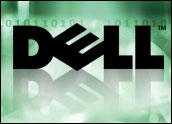
The IT industry purely loves “innovation,” especially when it is steeped in a bit of controversy, and last November’s announcement of Cisco, EMC and VMware’s VCE coalition set enough tongues wagging to cause a minor blip in Silicon Valley’s Richter scale readings. Why so? First, because the effort offered proof that Cisco’s highly publicized unified computing system (UCS) was no empty threat.
That made traditional systems vendors nervous enough, but with many of those players increasingly intent on delivering vertically integrated data center stacks and appliances, the VCE coalition offered a clear alternative for allied specialty vendors to leverage best-of-breed technologies into innovative, complete IT solutions. That’s threatening competitively, but it also directly refutes claims of superiority that vertical-integration proponents insist is theirs and theirs alone.
What’s VCE been up to since then? Since its launch, the coalition has maintained a steady drumbeat of partner and executive announcements, including the May 5th appointment of Michael Capellas as CEO of the Cisco/EMC joint venture (along with investments from VMware and Intel) that leads all aspects of VCE. Capellas was an interesting choice, since he brings to the table a long C-level executive record in companies including First Data, MCI, HP and Compaq.
However, all too often, joint venture executives are chosen to be (and tend to remain) subservient to their organization’s owners. The choice of a front-rank exec like Capellas suggests that CEOs John Chambers (Cisco) and Joe Tucci (EMC) wanted a leader for VCE whose stature and ambition was equal to their own. That decision bodes well for VCE and should help make the coalition more formidable, more quickly, than some may choose to believe.
The Vblock Architecture
What is a Vblock? Basically, it’s a robust IT infrastructure architecture that incorporates Cisco’s UCS blade servers and Nexus and MDS networking technologies, along with EMC’s CLARiiON, Celerra and Symmetrix storage systems. In addition, Vblocks are designed from the ground up to make full use of VMware’s enhanced virtualization technologies and Intel’s latest Xeon 5600 (Nehalem) processors.
While impressive architecturally, Vblocks will not appeal to every company or pocketbook. With options ranging from the “entry level” Vblock 0 (a single 42U enclosure that supports up to 800-plus virtual machines) to the Vblock 1 (two 42U enclosures/3000-plus VMs) and the Vblock 2 (three 42U enclosures/6000-plus VMs), the systems are clearly aimed at large organizations.
Beyond their pure size and scalability, Vblocks also are also pre-integrated at the factory, making them particularly easy and quick to deploy. More importantly, Vblocks are prevalidated for specific enterprise applications and processes, allowing them to support specific service level metrics.
Ready for Enterprise Prime Time
The VCE coalition describes Vblocks as transformative solutions that provide “a simplified transition to pervasive virtualization and the private cloud” — but what exactly does this mean?
Rather than representing a piecemeal approach to development, Vblocks are all about delivering predictable performance, capacity and capabilities. This includes providing VCE clients with everything from highly granular power and cooling requirements, extending from individual systems to entire data center facilities, to predetermined and designed capacity, scalability and security features. The result is a fully ready-for-enterprise prime time computing system.
Given its high levels of integration and optimization for virtualized solutions and performance, the Vblock certainly offers a simplified, yet highly reliable, vehicle for cloud computing. The architecture can also be used in traditional business scenarios; Vblocks have been tailored for applications, including VMware View (virtual desktop infrastructures), SAP, Microsoft Exchange 2010 and SharePoint 2010, and EMC’s Greenplum, according the the VCE coalition.
Applications/Opportunities
Of these, the solutions for SAP, Exchange and SharePoint appear to offer the most immediate commercial use cases for Vblocks. In fact, early adopters — including a global retailer, a major healthcare provider and a large government agency — are utilizing Vblocks to support tens of thousands of users, the coalition said.
Other Vblock solutions are works in progress. For example, EMC is running a pilot program for providing Vblock/VMware View-based virtual desktops to its employees. While most other VDI vendors offer full-blown “data center to the desktop” solutions themselves or with the help of partners, VCE currently only offers back-end infrastructure solutions — a less palatable option for many customers from where I sit.
A tastier opportunity for Vblocks may be found in EMC’s Greenplum, which leverages MPP (massively parallel processing) technologies to perform analytics on enormous data warehouses. The highly flexible and scalable nature of Vblocks seems a perfect fit for Greenplum, and I expect we’ll be hearing more about these deployments in the future.
There are also some intriguing nascent Vblock client wins that could provide VCE significant, even groundbreaking future opportunities. One, an entertainment company, considers Vblock ideal for supporting the highly changeable processing requirements of its media streaming service. Another, a global bank with over 50 acquired/child companies, has chosen Vblock 2 as a consolidation solution for all its data centers, including replacing numerous mainframe and other proprietary systems.
This project could be a very big deal. For years, vendors of various stripes have boasted of their ability to effectively port mainframe workloads to their own server platforms, but their success stories typically consist of migrating legacy apps housed in an ancient, wheezing mainframe or two. If the Vblock project succeeds as the coalition members and its banking client intend, it could provide the blueprint and best practices to inspire a tectonic shift in traditional financial services data centers.
Final Thoughts
Contrary to the doubts evinced by naysayers and competitors, the VCE coalition appears to be on track strategically and technologically. The addition of Michael Capellas seems an astute move — but more importantly, the Vblock development effort seems well positioned to address numerous business use cases. Yes, Vblocks are designed for the particular rigors of cloud data centers, but the architecture is also well suited to other existing and emerging business applications.
This does not mean that the road ahead for VCE will be smooth. Any IT startup, especially one with such aggressive goals and ambitions, is bound to hit some rough patches. Plus, competing vendors are likely to do everything they can to run VCE onto the shoulder (or into a ditch). This is hardly surprising, given what vertical systems vendors stand to lose should VCE succeed. The true measure of the coalition’s value lies in the attention being paid to it by other IT specialists, including NetApp and Brocade, which are embracing similar partner strategies.
While these efforts won’t have the Vblock architecture, they clearly reflect a growing recognition of the prime value of innovative collaboration. That notion — that allied IT specialists can successfully leverage their experience and best-of-breed technologies into highly innovative, competitive and complete enterprise solutions — forms the heart of the VCE coalition, and offers IT customers a profoundly different view of and way to the future.
E-Commerce Times columnist Charles King is principal analyst for Pund-IT, an IT industry consultancy that emphasizes understanding technology and product evolution, and interpreting the effects these changes will have on business customers and the greater IT marketplace.












































Social Media
See all Social Media